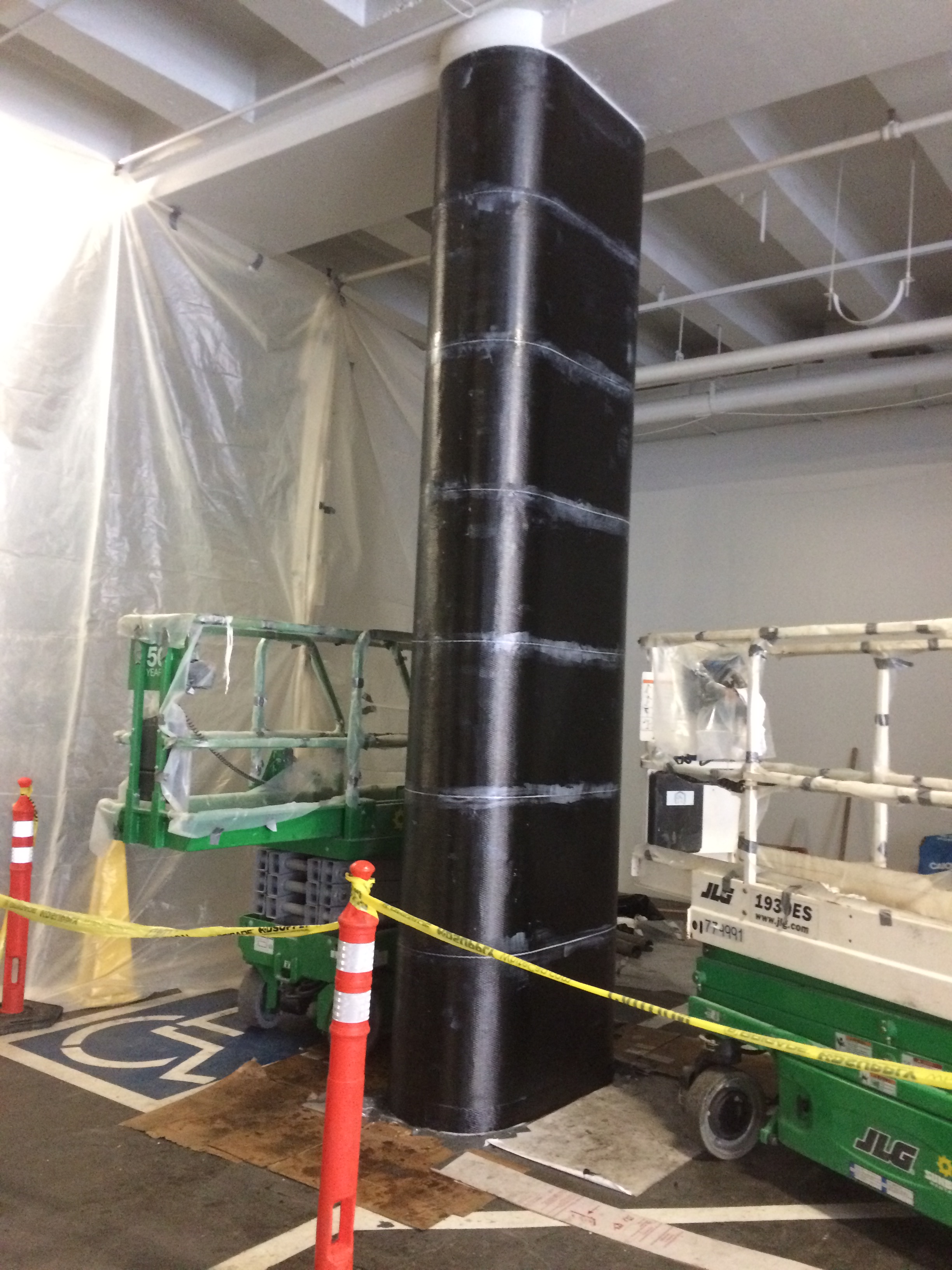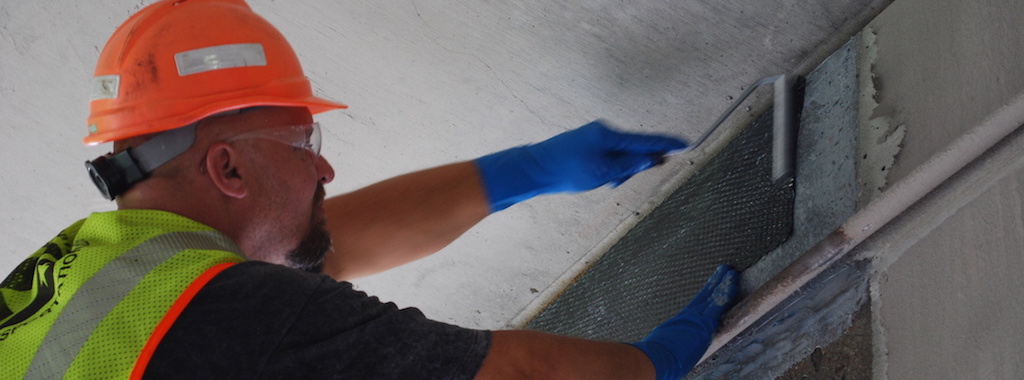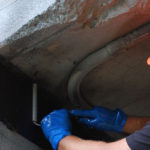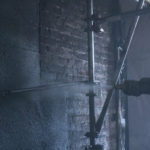FRP fiber-reinforced polymer provides a number of advantages over traditional concrete-strengthening materials and methods. Strengthening concrete structures by means of this composite has benefits for contractors and property owners alike.
While FRP is not feasible for all applications, there are demonstrable FRP advantages for many structural rehabilitation projects.
1. Adaptability to Any Geometry

Because FRP fabric is thin and flexible, it can be “U”-wrapped around beams.
FRP can be applied to curved surfaces, such as the exterior of grain silos. It can be wrapped around columns.
FRP can be applied in tight spaces, such as at a “V” intersection of a beam and a set of stairs. It can be cut into strips, for applications such as trim reinforcement around new openings.
2. High Strength-to-Weight Ratio
The strength-to-weight ratio of carbon fiber is about ten times that of steel alloy, and even the ultimate tensile strength of cured FRP composite is closer to two or three times stronger than 60 ksi reinforcing steel.
This combination of tensile strength and light weight represents a significant advantage to using FRP.
3. Less Disruption to Commercial Operations
Since heavy strengthening materials such as steel do not need to be hauled onto a job site, the application of FRP composite to a structure is less disruptive to commercial operations.
For example, FRP can be applied in an office environment without the need to displace workers.
4. Minimal Impingement on Valuable Space

Traditional column-strengthening materials may impinge on rentable or usable space.
Employing bulky reinforcement materials can reduce usable square footage in a parking structure, with repercussions for the owner’s revenue. Since FRP has a low spatial profile, it doesn’t come with these negative consequences.
When repairing and strengthening the underside of a bridge using FRP, the reduction of the bridge’s clearance is minimal.
When FRP is applied on top of horizontal structures such as slabs, the floor height is barely altered.
5. Better Resistance to Corrosion
The epoxy resin component of the FRP composite is more resistant than steel to corrosion from water and chemicals.
This means that FRP requires less maintenance over time than steel plates, which require periodic waterproofing and repainting.
Other FRP Advantages
While the FRP materials are more expensive than concrete or steel, the installation costs are much lower.
Your structural engineer can help you with the design component of FRP strengthening. Your engineer can also take advantage of our design services.
Uniting a thin profile, light weight, and flexibility with superior tensile strength, FRP may be a great choice for your next concrete repair or reinforcement project.






